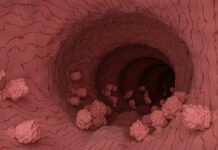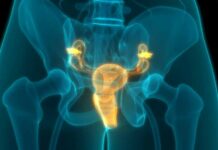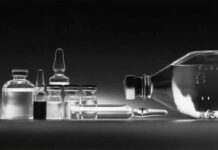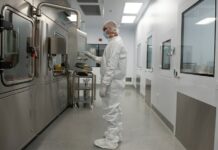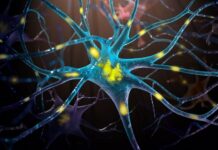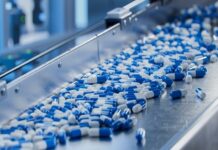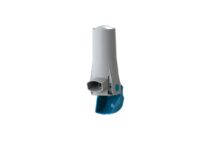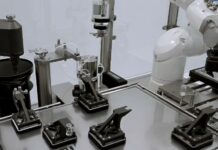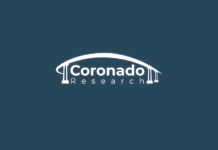Even sophisticated scientific approaches have problems. For challenging solvents, liquid and gas chromatography (LC and GC), the gold standard for analysis and separations, might yield limited insights. Molecular rotational resonance (MRR) is fast becoming commonplace since it may offer structural information on compounds and isomers in mixtures without pre-analytical separations. MRR can reduce separation time, quantify difficult solvents, and offer the sensitivity needed to test solvents in accordance with U.S. Chapter 467 of Pharmacopeia outlines residual solvent requirements for Class 2 combination C solvents, eliminating the need for consumables. After discussing how MRR may help structurally identify challenging chemicals and future reaction optimization applications, it will conclude that MRR belongs in the lab alongside existing chromatography methods.
Creating new medications is dangerous and expensive. About 12% of clinical trial medications are authorized by the U.S. The FDA estimates that developing a new medicine, including capital expenditure and costs for failed treatments, would cost $2 billion. Pharmaceutical businesses are under continual pressure to cut development risk and manufacturing costs. Regulatory agencies are also expecting more and earlier information as a candidate progresses through development and routinely assessing analytical methods and allowable ‘contaminant levels’.
Against this backdrop, the analytical laboratory must streamline procedures, enhance capabilities, and improve efficiency. Contemporary analytical labs have powerful technologies to examine and study samples of various kinds. These tools address research questions and assist manufacturing and quality control using chromatography, mass spectrometry (MS), Fourier-transform infrared (FT-IR), and nuclear magnetic resonance (NMR) spectroscopy.
Even the most modern scientific procedures have limits, and scientists must develop new approaches to solve long-standing problems. Sometimes the solution is reinvigorating and modernizing an established technology for new uses.
Molecular rotational resonance (MRR) spectroscopy shows how a trusted primary analytical tool may be repurposed in the digital era. MRR has long helped fundamental scientific discovery by providing clear structural information on substances and isomers in mixes without pre-analysis separation.
Until recently, lab MRR instruments required adaptation or construction. A breakthrough in chirped pulse Fourier-transform microwave spectroscopy gave MRR renewed impetus as a transformative technique for applied analysis, and the first commercial MRR instrument holds the key to implementing the technology into routine use and solving analytical chemistry’s persistent problems.
MRR has several potential uses in the pharmaceutical business, including accelerating medication development.
Job-appropriate tool
MRR provides unequivocal structural characterisation, making a molecule forever recognizable.
Note that isomers in a combination may be firmly described without separating the components. MRR determines each spectrum pattern to create a 3D structure.
While NMR is the gold standard for structural identification, it lacks sensitivity in mixture analysis and requires professional interpretation of spectra. MS is sensitive but does not always detect isomers, hence it is usually employed alongside liquid or gas chromatography (LC or GC), which requires costly consumables and technique development time. Without reference standards, FT-IR spectroscopy studies are difficult to interpret.
MS speed and NMR structure may be combined in MRR spectroscopy. It has been the academic lab’s mainstay for difficult chemicals till now. MRR’s commercial availability might revolutionize ordinary, high-throughput laboratory applications.
VOS Analysis Made Easy
Pharmaceutical manufacture uses several solvents, which might jeopardize product quality and safety if not adequately eliminated. Pharmaceutical residual solvents are “organic volatile chemicals that are used or produced in the manufacturing of drug substances, excipients, or dietary ingredients”. Manufacturers have worried about their hazardous potential for medicinal items for years.
Residual solvent analysis of bulk medicinal ingredients and finished pharmaceutical products is important because solvents pose a health concern and effect physiochemical characteristics. Residual solvent testing monitors bulk pharmaceutical drying or verifies finished products. Differences in bulk medication crystal structure may affect solubility and formulation. Odor and color changes may also cause client complaints.
The U.S. government regulates testing to prevent quality flaws that might compromise a safe, regulatory-approved product. According to USP <467> Residual Solvents and FDA advice, Q3C Impurities: Residual Solvents.
The standard technique for residual solvent testing is headspace GC with a flame ionization detector (FID) or MS (USP <467>). This is limited because certain sample matrices include non-volatile chemicals that diminish analyte peak response or create volatiles that provide misleading responses for other volatiles.
Some solvents need more complicated analysis, which might delay decision-making. According to USP <467>, solvents in Class 2, Procedure C should be examined using a different method than headspace GC due to its lower sensitivity.
By eliminating consumables and solvents, MRR simplifies technique development for scientists. MRR identifies in-process samples with equal sensitivity and greater quantitative performance than GC systems and decreases analysis times.
Classifying Impurities
Drug synthesis raw material impurities may affect drug formulation quality, but identifying and quantifying them can be difficult. MRR may help validate pharmaceutical raw material purity as manufacturers have minimal control over raw material impurities, unlike most other essential process parameters. These impurities frequently react similarly to the intended chemical, introducing potentially dangerous by-products with similar structures, necessitating extra purification procedures.
Most methods use chromatographic separation, which requires time-consuming process development for each input material. Despite their simplicity and quickness, direct spectroscopic methods are typically inferior to chromatography in mixture characterisation. MRR can successfully differentiate compounds with substantially similar structures, including chiral contaminants, since it can be applied directly to mixtures.
A research quantified regioisomeric, dehalogenated, and enantiomeric impurities in two raw materials used to synthesize HIV integrase inhibitor cabotegravir using MRR. This matters because these raw materials may introduce structurally similar contaminants into the medication. This is the first use of MRR to quick quantitative monitoring of isometric and dehalogenated impurities in pharmaceutical and chemical raw materials (chiral and achiral analysis) in substances that are difficult for GC. MRR’s excellent resolution and selectivity to minor molecule structure changes allow quick measurements without chromatographic separation. MRR is an extraordinarily selective technique applicable to the direct analysis of mixtures, including isomers. The same paper proposes that “MRR can have unique value in pharmaceutical process analytical technology (PAT) and quality by design (QbD) programs.
Another research employed MRR in realtime reaction monitoring to swiftly describe chemical reaction yield, specificity, and contaminants, the first to quantify pharmaceutical synthesis process purity. Online instrumentation saves time by running constantly during chemical reactions. Its high resolution and specificity allow MRR to clearly resolve and quantify species in a reaction mixture, making it superior to conventional process monitoring methods. MRR is sensitive to small changes in molecular structure and can rapidly quantify isomers and other impurities in a complex mixture without chromatographic separation, so it was used to monitor the product composition of an asymmetric continuous flow reaction to hydrogenate artemisinic acid for the semisynthesis of artemisinin.
Another research shows how MRR simplifies analytical procedures by characterizing reactions. This work identified and quantified crude reaction mixture regioisomeric impurities. Novel synthetic chemical processes may produce complicated mixtures with structurally identical analytes, making product identification and quantification problematic. As reaction characterization can be laborious and require many manual steps to obtain pure products for analysis, MRR offers a technique that directly determines reaction yield and byproduct content on crude materials without reference standards, resolving many mixture compounds without purification.
Chiral Analysis in Action
Pharmaceutical companies lack quick chiral purity analysis. MRR provides a novel structure-based chiral analysis method. Chiral tag MRR makes measuring enantiomeric excess (EE) and chiral molecule absolute configuration easy. The ability of MRR to quantify EE without chromatography allows high-throughput reaction optimization.
A recent work (11) assessed pantolactone’s EE utilizing targeted MRR spectrometry without reference samples with known enantiopurity. Pantolactone, a chiral lactone used to synthesize panthenol and pantothenic acid (vitamin B5), is sold worldwide in personal care items and over-the-counter pharmaceuticals. The EE of complexes with tiny chiral tag molecules was determined using broadband MRR spectroscopy and chiral tag technique.
MRR resolves pantolactone complicated spectra due to different moments of inertia. Further examination of reference samples made from mixes of (R)- and (S)-pantolactone molecules employed a chirped pulse spectrometer to describe the complexes’ structure. MRR spectrometry was employed in EE analysis with identical analytical parameters and a 15-min sample-to-sample cycle time, quicker than chiral gas chromatography.
Broadband MRR spectroscopy tests match quantitatively with chiral GC findings and provide “significant reductions in measurement time and sample consumption.”
Supporting Deuterium Switch
Recently, selectively deuterated small compounds have become potential therapeutic prospects. Highly selective deuteration reaction methods are in demand due to these novel active medicinal components. Strategically replacing hydrogen with deuterium may modify a compound’s metabolism and metabolite distribution, increasing therapeutic effectiveness and safety.
Pharmaceutical companies are interested in this “deuterium switch”. FDA-approved deuterated medication deutetrabenazine may treat Huntingdon’s illness. Enantioisotopomers, chiral compounds only due to deuterium substitution, may be created via site-specific deuteration.
Drug APIs with chiral and achiral compounds may respond differently. Because chiral raw materials account for a large portion of pharmaceutical production costs, finding effective, cheaper synthetic replacements is important.
Direct Online Reaction Monitoring
Optimizing synthetic pathways is crucial to improving development success rates and is part of the US PAT project to enhance pharmaceutical manufacturing processes in real time.
The MRR method is appealing. With the right sample feeding mechanism, MRR can identify and quantify components directly from reaction mixtures without chromatographic separation.
A Bright Future
MRR marks a new spectroscopic age. While chromatography will remain a mainstay of routine analytical chemistry and other techniques will remain best for certain applications, MRR’s benefits in definitive structural analysis for mixtures, chiral compounds, and high throughput and process control offer analysts exciting new potential.
For the first time, labs may add MRR to their analytical arsenal in a strong, dependable, well-supported, widely-accessible equipment.




